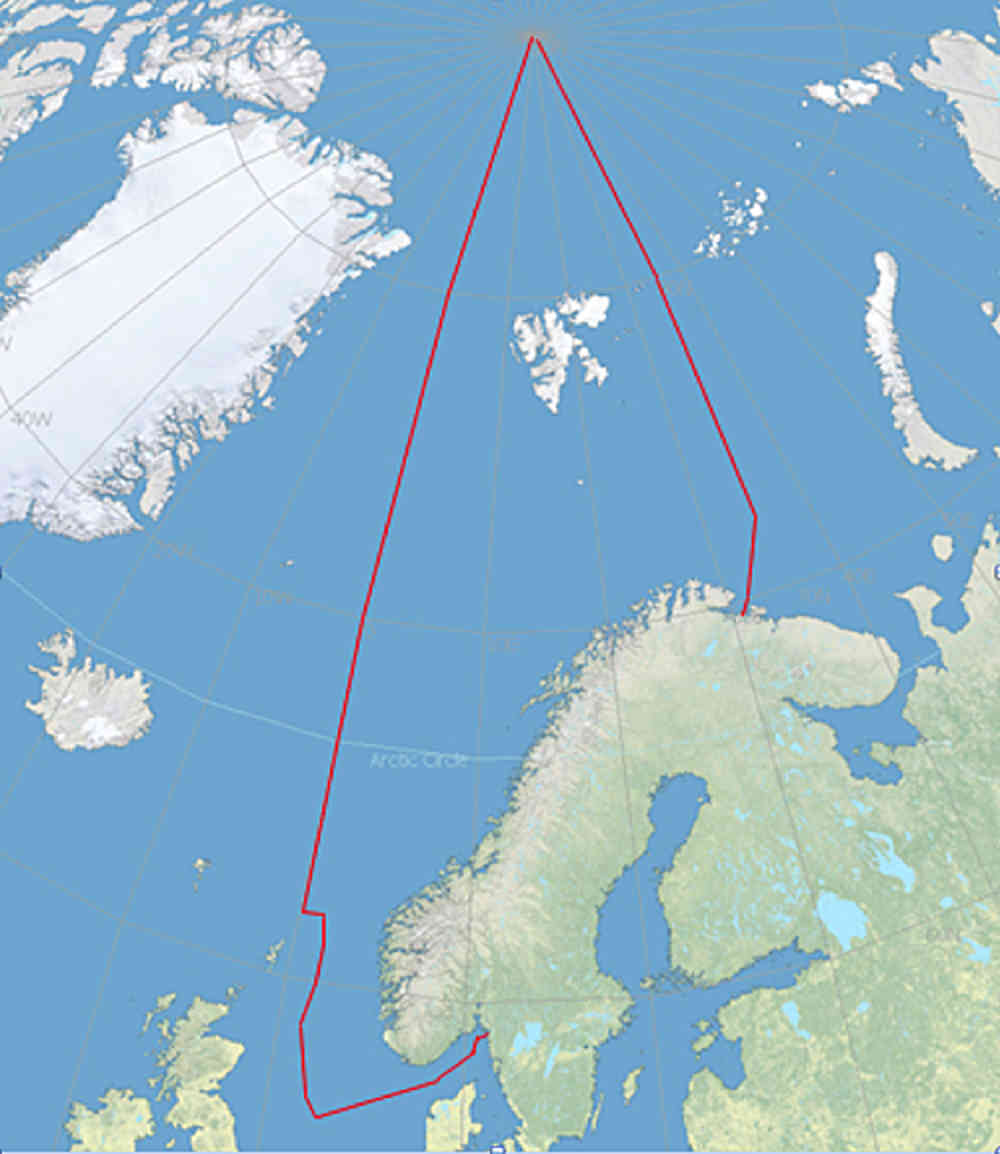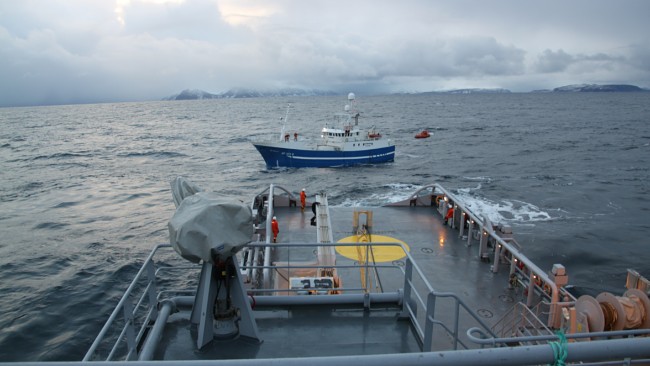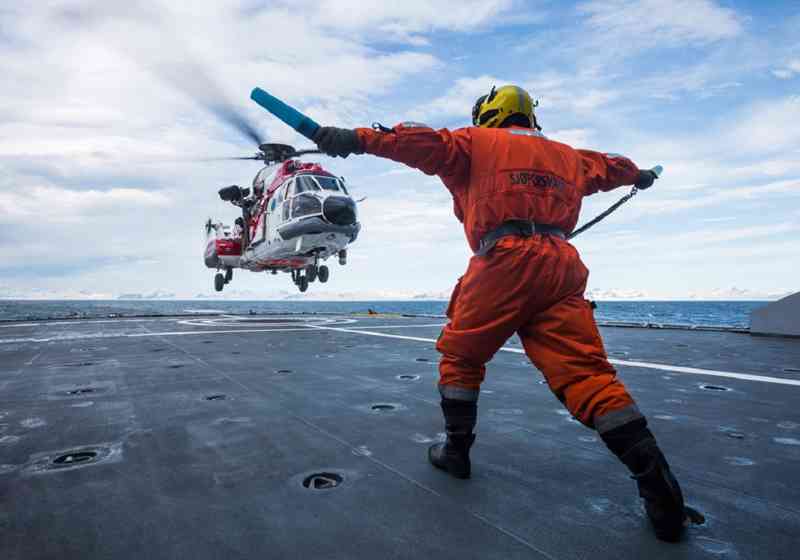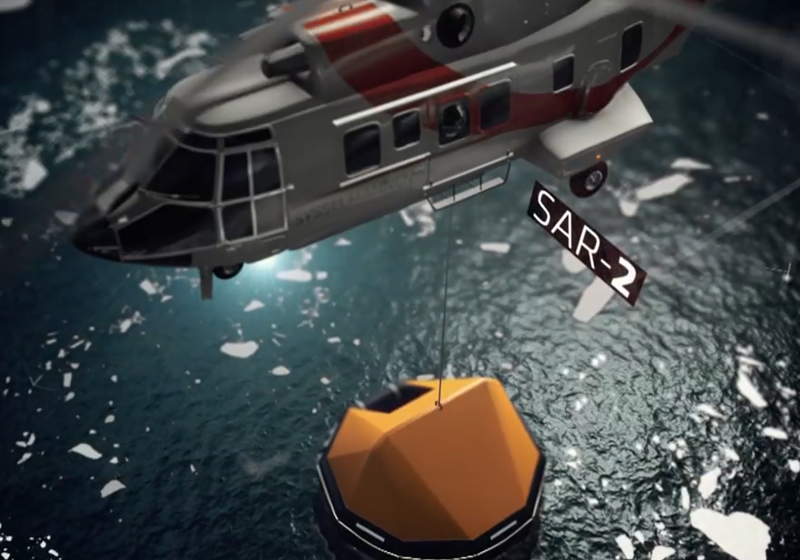The Norwegian area of responsibility (SRR):

This area is considerably larger than the Norwegian economic zone/fisheries protection zone around Svalbard, and must not be confused with them.
Cooperation across borders
The rescue service is international in nature and governed by conventions and agreements. All rescue services at sea and in the air are subject to the same regulations worldwide through the IMO (International Maritime Organization) and ICAO (International Civil Aviation Organization) conventions.
Rescue services on land are a purely national matter and are in Norway described by Royal Decree of 6 Dec 2019 "Organizational Plan for the Rescue Services."
In addition, Norway has signed a number of bilateral and multilateral agreements with neighbouring countries that describe the search and rescue services in more detail.
The latest in the series of such agreements governs cooperation on search and rescue in conjunction with air and sea traffic in the Arctic. The agreement was signed at the Arctic Council's Ministerial meeting in Greenland in 2011. This is a collaboration between eight countries in the Arctic: Norway, Sweden, Finland, Denmark (Greenland), Iceland, Russia, Canada and the United States. The Arctic Agreement addresses how rescue operations will be carried out, procedures to obtain access to the territory of other countries, the exchange of information and funding.
Preparedness
The rescue service in Norway is a national effort in which all resources suitable for saving lives can and will be used, both public, voluntary and private. The rescue service thus has few dedicated resources that it has direct control over, but on the other hand it has access to most other resources in all of society.
The only dedicated full time resources are the gouvermental operated SAR-helicopters that are on standby at seven bases on mainland Norway. They are under the operational and tactical command of the Joint Rescue Coordination Centre (HRS). In addition, the Governor of Svalbard have two SAR helicopters that JRCC use in search and rescue missions.
The old but trusty SeaKing rescue helicopters is about to be replaced by AW101 SAR helicopters, they have a longer range and are better equipped.
The Coast Guards helicopters NH90 are taken out of service and will be replaced by SeaHawk helikopters in the near future.
In addition to this, the offshore industry have SAR helicopters and rescue vessels in connection with oil installations that the rescue service uses.
At sea the Norwegian Sea Rescue's rescue boats and Coast Guard vessels are important resources.
However it is frequently the case that passing vessels are closest and are often the ones who save lives and property at sea. All vessels are obliged to participate in search and rescue operations. Rescuing and assisting neighbouring vessels has long traditions in Norway and will continue to be very important, regardless of how many new rescue helicopters we have.
Safety in numbers
Regardless of preparedness, it can be dangerous to be far away from civilization. Time, distance, climate and the polar night make search and rescue operations with the rescue service's resources exceedingly difficult and in some cases impossible. The best approach is to prevent accidents from happening.
Mountaineering rule number seven is also applicable at sea: "Never go alone." Ships in areas a long distance from rescue resources should sail in pairs. Then they can assist each other in case of an accident. The closest rescue helicopter could be several hours away.


